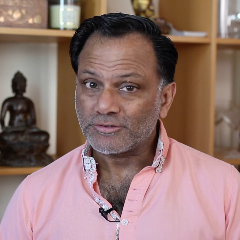You are not currently logged in. Please create an account or log in to view the full course.
Validity
- About
- Transcript
- Cite
Research Methods – Good Scientific Practice
In this course, Dr Ashok Jansari (Goldsmiths, University of London) explores how researchers report good (or sometimes not good) science. In the first lecture, we think about the three main forms of validity: face, concurrent, and ecological. In the second lecture, we think about the three main forms of reliability: test-retest, inter-rater, and internal. In the third lecture, we think about features of science and how the empirical method can promote good scientific practice. Next, we think about theory construction and the process that a good researcher will follow to work from their initial idea towards their finished theory. In the fifth and final lecture, we think about scientific reporting and the five key sections of a report which adheres to the American Psychological Association (APA) standard.
Validity
In this lecture, we think about validity, focusing in particular on: (i) whether a study is measuring what it explicitly says it is measuring, known as face validity; (ii) whether a study’s results align somewhat with existing results in the same field, known as concurrent validity; (iii) whether the results of an experiment can be applied to the real world, known as ecological validity; (iv) which areas of psychology suffer particularly with ecological validity.
Cite this Lecture
APA style
Jansari, A. (2022, March 07). Research Methods – Good Scientific Practice - Validity [Video]. MASSOLIT. https://massolit.io/courses/research-methods-good-scientific-practice/scientific-reporting
MLA style
Jansari, A. "Research Methods – Good Scientific Practice – Validity." MASSOLIT, uploaded by MASSOLIT, 07 Mar 2022, https://massolit.io/courses/research-methods-good-scientific-practice/scientific-reporting

